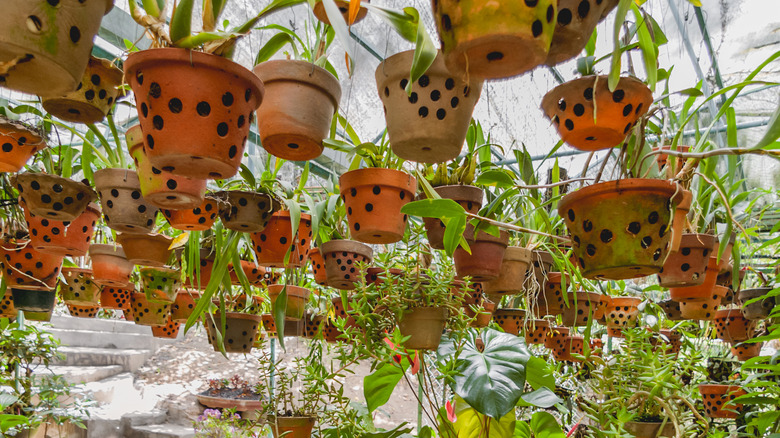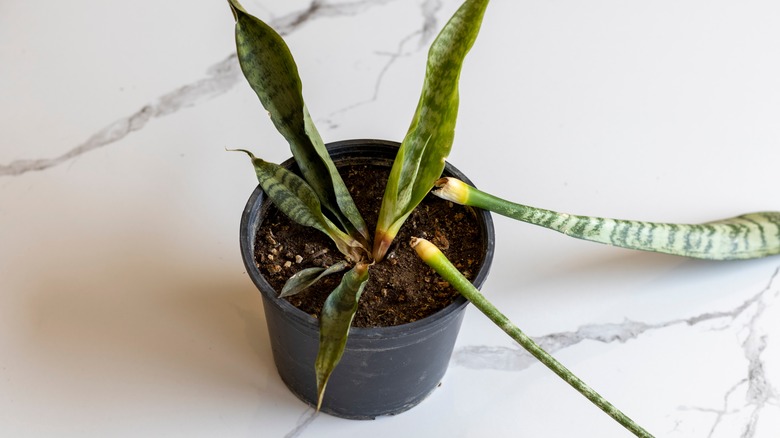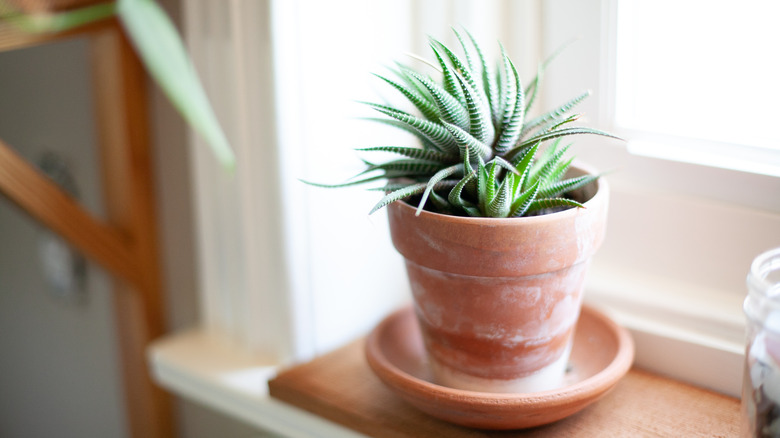What Is Proper Drainage And Why Is It So Important For Houseplants?
Each and every type of plant is a little different from the rest. They have individual species names. They originate from different climate zones across the globe. They have different preferences for soil quality and watering schedules. But the one thing almost every one of them needs, as confirmed by University of Illinois Extension, is proper drainage. Aside from a small percentage of aquatic plants that grow in bogs or ponds, plants grown in soil cannot handle standing water or mud. In time, it will essentially drown them.
Drainage is a separate aspect of plant care than watering, and it's important not to confuse the two. Since many plants need to be watered on a regular basis, it's common to see care instructions telling you to keep the soil evenly moist. This could lead you to believe that wet soil is a good thing. However, evenly moist and wet cause two very different outcomes when it comes to plant care.
Regardless of watering preferences, a potted plant always needs excess water to fully drain away from its root system and out of its container. You can think of excess moisture as equating to a soaking wet, dripping sponge. Conversely, evenly moist would equate to a sponge that has been thoroughly rung out yet remains damp.
Just like you wouldn't want a waterlogged lawn in your front or backyard, you want to steer clear of putting your houseplants in this detrimental position in order to ensure their health and long life.
What happens with improper drainage
The most likely issue to be experienced with a poorly drained houseplant is root rot. As explained by the University of Wisconsin-Madison's Division of Horticulture, this is the common name for any number of diseases that kill off a plant by destroying its roots. Many of these diseases are caused by four different species of fungi, which are commonly found in wet soil: Pythium, Phytophthora, Rhizoctonia solani, and Fusarium.
Plants depend on their roots to provide them with sustenance in the form of nutrients and water. The roots themselves also need access to oxygen in order to stay healthy. This is why it's helpful to amend potting soil with certain types of substrates that can help aerate the soil, such as perlite, vermiculite, or expanded clay pebbles. Without oxygen, waterlogged roots cannot breathe and, therefore, die.
Unfortunately, by the time most of us realize we have a plant suffering from root rot, it's unsalvageable. Signs to look for include wilted leaves when the soil is moist, yellow or browning leaves, and puddles of water collecting in drainage saucers.
White mold growth on the top of the soil is another common problem brought on by insufficient drainage. It's not as harmful to the plant as root rot, but it should still be eradicated, especially because mold is bad for humans. Happy Sprout recommends scraping the top layer of soil away and removing it from the plant. In extreme cases, repotting will be necessary.
How to ensure proper drainage
The easiest way to ensure proper drainage for your houseplants is to keep them in pots with drainage holes, set on adequately sized saucers. Each time you water your plant, allow the excess water to accumulate in the saucer and then immediately dump it. Place the empty saucer back under the plant to catch any further drips.
If you like the look of a pot that has no drainage holes, it's often relatively easy to make your own holes with a drill, provided you have an appropriate bit. If that's not the case, then you can double pot. For this, you'll keep the plant in its original plastic grow pot and place the whole thing into a larger container. A handful of gravel placed between pot layers builds extra space for the water to accumulate. As with the saucers, remove excess water as soon as possible after each watering.
While it can be helpful to add rocks between the layers of your doubled pots, the same is not true for rocks lining the inside of a single pot before it's filled with soil. Even though it seems like it would have the same effect, it's a myth that this will improve drainage; it can actually make a situation worse. According to NC State's Cooperative Extension, this creates what is known as a perched water table where the excess water collects at the bottom of the soil instead of draining into the space between the rocks.


